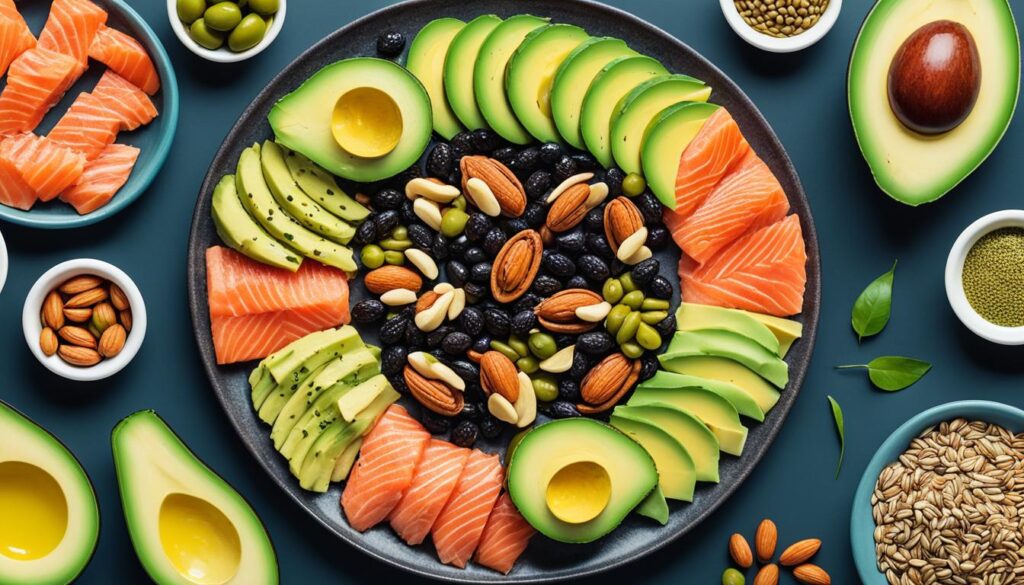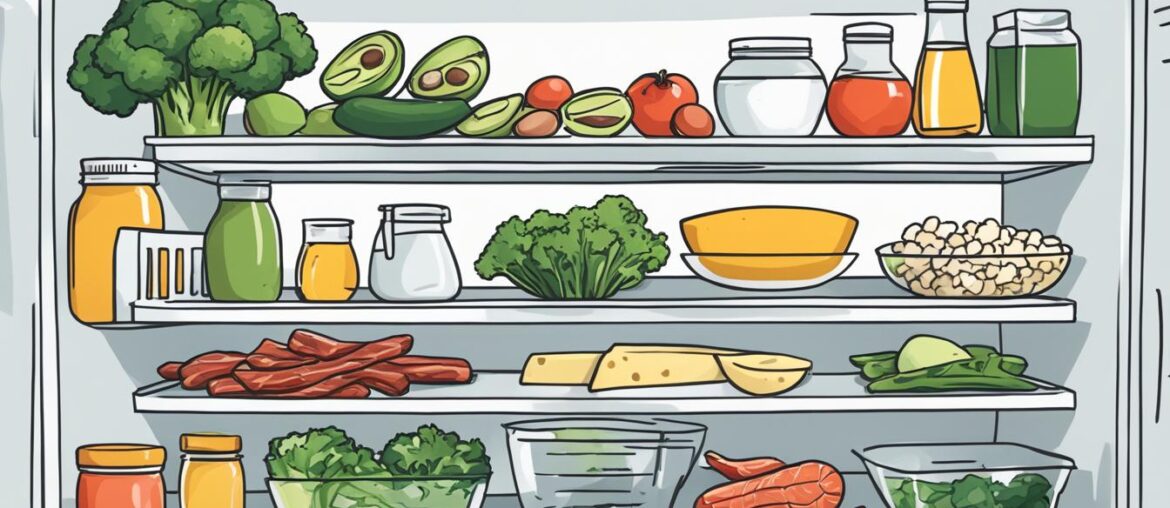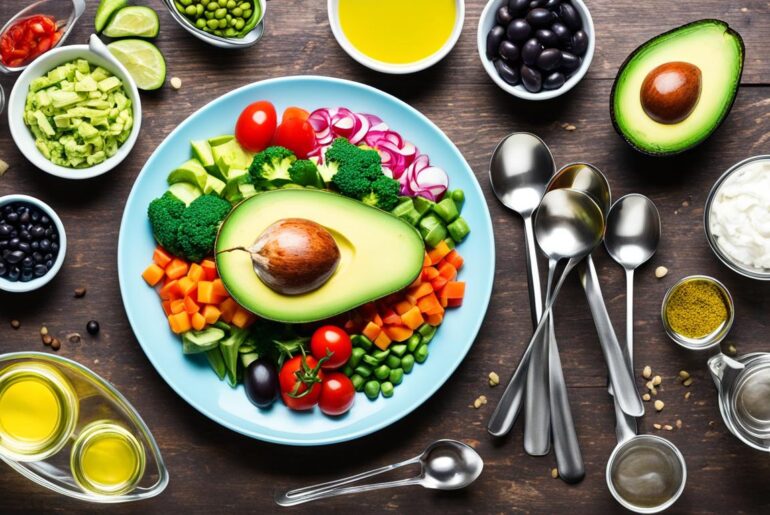The ketogenic diet has gained popularity for its ability to promote weight loss and improve overall health. By minimizing carbohydrate intake and increasing healthy fat consumption, the keto diet helps your body enter a state of ketosis, where it burns stored fat for energy. To embark on a successful weight loss journey with the keto diet, having a comprehensive shopping list is crucial.
In this article, I will provide you with a full ketogenic diet shopping list that covers all the essential foods you need to achieve your weight loss goals. From fats to vegetables, proteins to fruits, this shopping list will ensure that you have everything you need for a successful keto diet.
By following a well-planned keto diet and incorporating these carefully selected foods into your meals, you can maximize your chances of success and enjoy the many benefits that come with it. Weight loss, increased energy levels, and improved mental focus are just some of the advantages of adopting a keto lifestyle.
So, let’s dive into the full ketogenic diet shopping list and kickstart your weight loss journey on the keto diet!
Understanding the Macros on the Keto Diet
The keto diet, also known as the ketogenic diet plan, is a low-carb diet that focuses on macronutrient distribution to achieve ketosis—a metabolic state in which the body burns fat for energy instead of carbohydrates.
On the keto diet, your macronutrient intake is divided into the following percentages:
- 70% Healthy Fats: Fats should make up 70% of your calorie intake. Include sources like avocado, olive oil, coconut oil, and nuts.
- 25% Proteins: Get 25% of your calories from proteins. Opt for high-quality sources such as eggs, chicken, beef, fish, and seafood.
- 5% Carbohydrates: Limit your carbohydrate intake to just 5% of your calories. Choose low-carb vegetables, leafy greens, and keto-friendly fruits.
By maintaining this macronutrient distribution, you can enter and sustain ketosis, which promotes fat loss and provides numerous health benefits.
The Role of Macros in the Keto Diet
The distribution of macros is vital to the success of the ketogenic diet. High fat intake helps train your body to use fat as its primary fuel source, leading to ketosis and weight loss. Adequate protein intake preserves lean muscle mass and supports various bodily functions. Restricting carbohydrate consumption forces your body to rely on ketones derived from fat, as opposed to glucose from carbs, for energy.
This macronutrient balance is key to achieving and maintaining ketosis, and it influences the effectiveness and sustainability of the keto diet.
“The macronutrient distribution on the keto diet is carefully calculated to optimize fat burning and ketosis.”
To ensure proper macro intake, it’s essential to plan your meals and create a comprehensive shopping list that aligns with the ketogenic diet guidelines. Emphasize healthy fats, prioritize quality protein sources, and select low-carb options for vegetables and fruits.
Tracking Macros on the Keto Diet
Tracking your macros is crucial when following the keto diet. By monitoring your fat, protein, and carbohydrate intake, you can ensure that you stay within the recommended ratios and maintain ketosis.
| Macronutrient | Daily Intake |
|---|---|
| Healthy Fats | 70% |
| Proteins | 25% |
| Carbohydrates | 5% |
By using a food tracking app or manually calculating your macronutrient intake, you can stay on track and make adjustments as needed. Keep in mind that individual needs may vary, so consulting a healthcare professional or registered dietitian can provide additional guidance for your specific situation.
Essential Fats for the Keto Diet
Healthy fats play a vital role in the success of the ketogenic diet. They not only provide the majority of your calories but also help your body reach and maintain ketosis. Including these essential fats in your shopping list will ensure you have the necessary ingredients to support your keto journey.
Types of Healthy Fats:
- Olive oil
- Coconut oil
- Avocado oil
- Lard or tallow
- Heavy cream
- Sour cream
- Various types of cheese
These fats serve multiple purposes in your keto meal preparation. Olive oil, coconut oil, and avocado oil are excellent choices for cooking and adding flavor to your dishes. Lard or tallow can be used for frying and sautéing, while heavy cream and sour cream are perfect for incorporating creaminess into your recipes. Additionally, including various types of cheese, such as cheddar, mozzarella, or cream cheese, adds richness and depth of flavor to your meals.
When selecting fats for your keto diet, opt for unprocessed options to ensure you are getting the maximum nutritional benefits. Avoid trans fats and highly processed fats, as they can have detrimental effects on your health.

Remember, healthy fats are not something to fear on the keto diet. They are a valuable source of energy and support your body’s ability to burn fat efficiently. Embrace these essential fats and enjoy the flavor and satisfaction they bring to your meals.
Low-Carb Vegetables and Fruits on the Keto Diet
While following the keto diet, it’s important to limit your consumption of starchy vegetables and high-sugar fruits. However, there is still a wide variety of delicious and nutritious low-carb options that you can include in your keto-friendly shopping list. These vegetables and fruits will provide you with essential nutrients while keeping your carbohydrate intake low.
Recommended Vegetables for the Keto Diet
When it comes to low-carb vegetables, leafy greens are a great choice. They are packed with vitamins, minerals, and fiber while being low in net carbs. Some recommended leafy greens for the keto diet are:
- Lettuce
- Kale
- Spinach
- Bok choy
- Cabbage
Other low-carb vegetables that you can enjoy on the keto diet include:
- Broccoli
- Brussels sprouts
- Cauliflower
- Cucumbers
- Zucchini
These vegetables are not only keto-friendly but also versatile, allowing you to create a variety of delicious recipes while staying within your carbohydrate limits.
Keto-Friendly Fruits
Although fruits tend to be higher in natural sugars, there are still some keto-friendly options that you can enjoy in moderation. These fruits are low in net carbs and can be incorporated into your diet:
- Avocado
- Blackberries
- Lemons
- Raspberries
- Strawberries
These fruits provide essential nutrients, antioxidants, and fiber while keeping your sugar intake in check.
By incorporating these low-carb vegetables and fruits into your keto diet, you can ensure that you are getting a variety of nutrients while maintaining ketosis and reaching your weight loss goals.
Protein Sources for the Keto Diet
Protein is a vital component of the ketogenic diet, helping to support muscle growth, repair, and overall health. While it’s important to consume protein in moderation to maintain ketosis, incorporating quality protein sources into your shopping list is crucial for a balanced keto meal plan.
One of the most versatile protein sources for the keto diet is eggs. Eggs are not only affordable and easy to prepare but also packed with essential amino acids and nutrients. Whether scrambled, boiled, or used in various keto-friendly recipes, eggs are a great addition to your diet.
When it comes to land-based protein sources, beef and chicken are excellent choices. Opting for lean cuts of beef, such as sirloin or tenderloin, and skinless, boneless chicken breasts can help you meet your protein needs without compromising your ketosis. These meats are not only protein-rich but also provide essential nutrients like iron and zinc.
Fatty fish and seafood are another category of protein sources that should be included in your keto shopping list. Fatty fish like salmon, tuna, and sardines are not only rich in protein but also loaded with omega-3 fatty acids, which have been shown to support heart and brain health. Seafood options like shrimp, mussels, and scallops are also great choices, offering a variety of nutrients while keeping your carbohydrate intake low.
FAQ
What is the ketogenic diet?
The ketogenic diet is an ultra-low-carb, high-fat diet that helps your body enter a state of fat-burning ketosis, leading to weight loss and various health benefits.
How can a shopping list help with weight loss on the keto diet?
Having a comprehensive shopping list ensures that you have all the essential foods needed to follow the keto diet, making grocery shopping easier and maximizing your chances of success.
What are the macronutrient ratios on the keto diet?
The keto diet focuses on a distribution of 70% of calories from healthy fats, 25% from proteins, and only 5% from carbohydrates, which helps your body enter ketosis and burn fat for energy.
How can I ensure I include enough healthy fats in my shopping list?
You can include essential fats such as olive oil, coconut oil, avocado oil, lard or tallow, heavy cream, sour cream, and various types of cheese. These fats can be used for cooking, dressing, and adding flavor to your meals.
Which low-carb vegetables and fruits should I include in my shopping list?
Recommended vegetables for the keto diet include lettuce, kale, spinach, bok choy, cabbage, broccoli, Brussels sprouts, cauliflower, cucumbers, and zucchini. As for fruits, avocado, blackberries, lemons, raspberries, and strawberries are keto-friendly choices.
What are some protein sources that I should include in my keto diet shopping list?
You should include eggs, beef, chicken (preferably dark meat), pork, fatty fish like salmon or tuna, and seafood in your shopping list. These protein sources provide essential amino acids and help you feel full and satisfied, supporting your weight loss efforts on the keto diet.




